Abandoned Stadiums of Europe, South America, and Africa
Friday, 18th November 2011 by Kyle Kusch
With our London Olympics preview earlier this week featuring the brand new London Olympic stadium, it seems like a poignant time to explore what happens to these enormous landmarks when time eventually catches up with them. Sometimes they’re rebuilt and sometimes they’re replaced, but some stadiums just get left behind. Today we begin a two-part tour of abandoned stadiums around the world with a look at old arenas in Europe, South America, and Africa.
Above is Estadio Lluís Sitjar in Palma de Mallorca, Spain. Built in 1945, for over half a century the 18,000 seat stadium was the home of football club RCD Mallorca. The stadium has sat unused since 2007, but the word 'Mallorca' can still be plainly seen spelled out in the seats. The field of play, however, is already in a sad state.
On another populous Spanish island, Gran Canaria, lies Estadio Insular, which was the home of UD Las Palmas. Built in the same year as Lluís Sitjar, the 21,000 seater was abandoned four years earlier. Grass and trees are already rooting themselves in the stands, and the walls are covered in graffiti.
Stade des Charmilles in Geneva was the site of five FIFA World Cup games in 1954. Much of the facility was dismantled in 2002 and the field is completely barren, but the grandstands remain in place. In the rival city of Zurich, the demolished Hardturm also hosted World Cup games. Satellite imagery shows the shells of the grandstand are still intact, and Street View shows the rubble surrounding it.
In Germany, Gelsenkirchen’s Parkstadion was the home of the Bundesliga’s Schalke 04 from 1973 to 2001. Since then, about one-half of the seating has been removed, but the rest remains.
The largest abandoned stadium seen on Google Maps is the Estadio Fonte Nova in Salvador, Brazil. Originally built to a capacity of 66,080, the stadium was expanded to a monstrous 110,000 seats in 1971. Tragedy struck Fonte Nova in 2007, when an upper terrace collapsed during a Third Division championship final, killing seven spectators and injuring forty. The stadium was immediately closed. Since this imagery was captured, Fonte Nova has been demolished.
At one point the largest arena in the Czech Republic, Brno’s Stadion Za Lužánkami has sat in state for the past decade. Not only is the old playing field easy to make out, but even the goalposts are still standing. Around the edges, though, trees up to 3 metres high have sprouted in the bleachers.
Not all abandoned stadiums are left to rot. The Dell, the former home of English side Southampton, was redeveloped as a housing estate after its 2001 closure. Not only does the estate retain the shape of the original stadium, but all of the apartment blocks are named for famous Saints players.
Naturally, there aren’t only modern abandoned arenas to be found on Google Maps. The Plaza de Toros in Cartagena, Spain has been abandoned for nearly a century. Built on top of an ancient Roman arena, the location is set to be the home of a new Roman museum. Over in Merida, this ancient amphitheatre dates all the way back to 25 BC. The gladiator pit is exposed in the middle of the arena.
We end the first part of our tour in South Africa, where in Cape Town, Greenpoint Stadium was torn down to make way for the neighbouring Cape Town Stadium in advance of the 2010 World Cup1. Here we see demolition crews working to dismantle the arena. The north grandstand, however, remains standing.
Read part two of our abandoned stadium tour: Abandoned Stadiums of the United States.
-
We toured the stadiums of the 2010 World Cup in June 2010. ↩︎
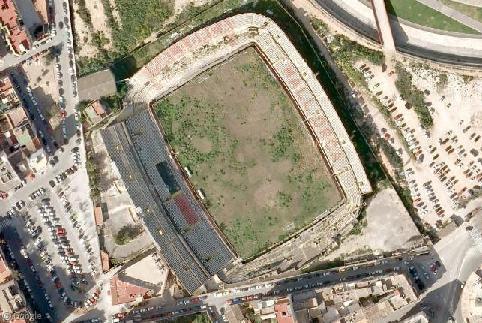
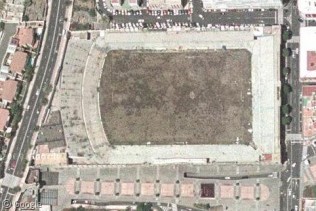

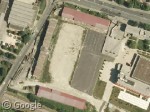
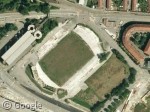
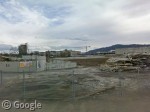
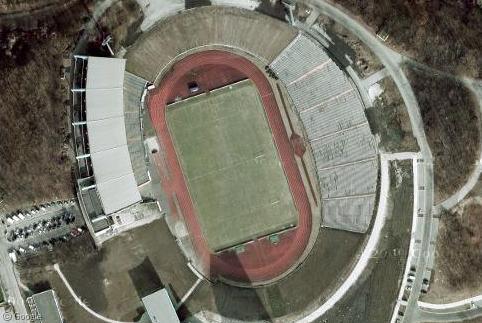
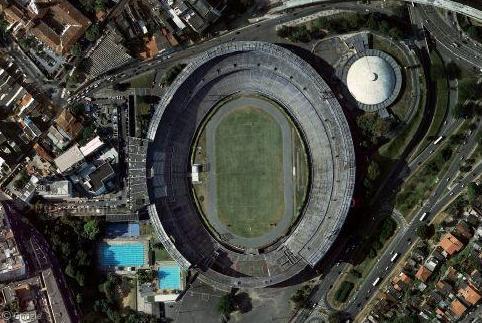
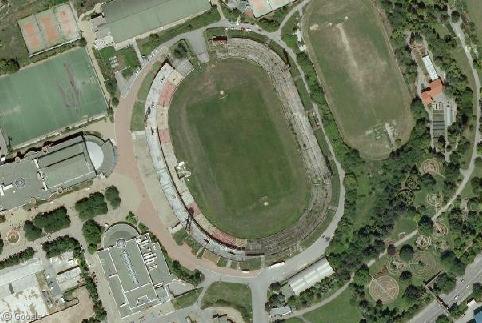
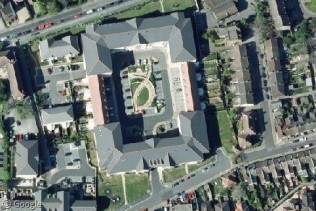
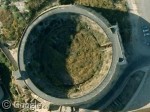
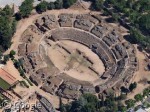
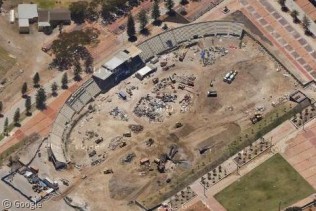
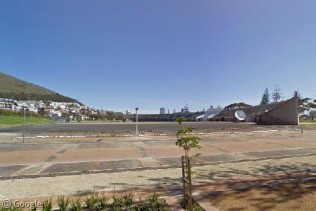
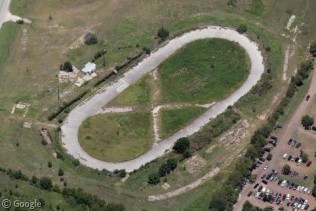
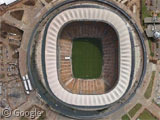
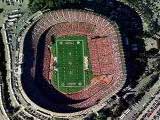
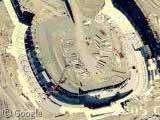
One of the most well-known examples of stadium redevelopment in the UK is the old Arsenal Stadium, popularly known as Highbury. It is now a development of apartments called Highbury Square, and as in Southampton the blocks are arranged around a central garden in place of the pitch. The stands were all demolished but the Art Deco façade was retained. Arsenal FC’s new Emirates Stadium is only a short distance away.
View Placemark
Worth mentioning is another Czech stadium. Located in Prague the Strahov stadium had a capacity of 240 000 spectators and was the largest in the world.
Nowadays it serves as a training area for local football team.
Situated here 50.080556,14.387778
We have one in the Slovenian capital Ljubljana http://g.co/maps/msn4x It’s historical monument and nobody has enough money to restore it.
As a Saints fan its always nice to see my team get a mention, and the Dell is a great example of sensitive re-development. Also thought i’d raise a shout for Swansea’s Vetch Field…
+51° 36′ 59.41″, -3° 57′ 0.06″
(51.616504, -3.950018)
I think that demolition has now started (imagery may be a bit out-of-date), but the centre circle will be retained where people’s ashes have been spread over its 93-year history, and while a developer is being sought, the pitch will be used as temporary allotments 🙂
You missed the most famous one of all, probably the biggest and one of the few known gladiator schools.
Not to mention the original Olympics stadium
And its more recent successors, which line the shore of Leoforos Poseidonas in Piraeus.
Hi, Rahere,
Unfortunately, there’s only so much you can squeeze into one article. I left out the Colsseum since it had already been covered on this site, the Circus Maximus since it’s not structurally visible (the site is, but the facility isn’t) and Panathinaiko (the ‘original’ Olympic stadium) because it’s still in use.
At the old Parkstadion (Schalke) the terraces behind the goals (the curves) where standing-room-areas, so there hasn’t been much removing of seats at all :-]